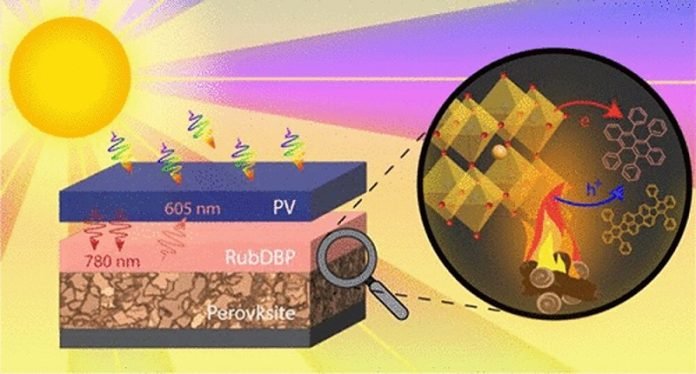
Scientists from Florida State University and the FAMU-FSU College of Engineering are working to develop innovative solar cells for a brighter tomorrow.
Instead of using conventional silicon, they are investigating a promising material called perovskite.
Their groundbreaking research, recently published in The Journal of Physical Chemistry C, focuses on understanding how perovskite-based solar cells perform under real-world conditions, including extreme temperatures and varying sunlight.
Solar cells are devices that convert sunlight into electricity. Most solar cells today are made from silicon.
However, scientists are constantly exploring alternative materials to enhance energy conversion efficiency. Perovskite is one such material that shows great potential. Not only does it act as a solar cell, but it can also facilitate a remarkable process called upconversion.
Upconversion involves harnessing low-energy photons from sunlight and transforming them into high-energy photons. Imagine converting weaker particles of light into stronger ones.
This upconversion phenomenon could significantly boost the energy output of solar cells, paving the way for more efficient solar power generation.
Professor Theo Siegrist, from the Department of Chemical and Biomedical Engineering, explained their research approach: “We wanted to find an innovative way to utilize those photons of energy in light that would otherwise go to waste.
Our goal was to store the energy from one photon and combine it with another to create a single, more powerful photon that can overcome energy barriers.”
Assistant Professor Lea Nienhaus, from the Department of Chemistry and Biochemistry, added, “Our idea was to emit a usable high-energy light particle through the upconversion process.”
Previous studies on perovskites primarily focused on their degradation under high temperatures and intense light. However, the research team at Florida State University and the FAMU-FSU College of Engineering took a step further.
They examined perovskite-based upconversion devices in real-world conditions, considering factors like heat and light that solar cells typically encounter. This deeper understanding helps guide future efforts towards the development of commercial solar cells.
To study the properties of their upconversion devices, the researchers subjected them to temperatures of approximately 60 degrees Celsius. By employing techniques like optical spectroscopy and X-ray crystallography, they analyzed the devices’ behavior.
The results were intriguing. The performance of the upconversion devices declined significantly after exposure to high temperatures, but the cause wasn’t perovskite degradation.
Instead, the organic molecules involved in the upconversion process crystallized under the heat, rendering the devices less effective.
Professor Nienhaus explained, “When we heated and illuminated perovskite alone, it degraded. However, when we added the organic molecules, the perovskite became more stable.
This finding suggests that the organic molecules contribute to a longer-lasting perovskite, which is a significant step forward. Although there are still engineering challenges to overcome before perovskite-based upconversion devices become practical, we believe our work will help address those challenges.”
The researchers are unlocking the potential of perovskite materials to revolutionize solar energy conversion.
Their investigation into real-world conditions and the role of organic molecules in upconversion devices brings us closer to highly efficient solar cells.
With continued research and innovative engineering, we may soon witness solar power solutions that harness more of the Sun’s energy, providing a sustainable and brighter future for us all.



